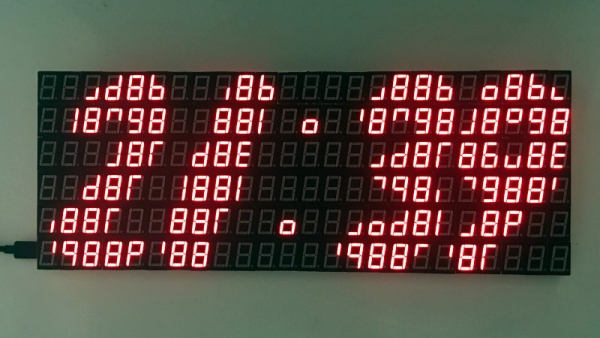What do you do with 144 7-segment displays? If you’re [Frugha] you put them all together to create an epic clock. Each display has 8 individual LEDs — 7 segments, and a decimal point. Put that all together, and you’ve got 1152 individual LEDs to control. This presented a problem, as [Frugha] wanted to control the clock with a single Arduino Nano. Even charlieplexing won’t get you that many I/O lines.

The solution was a nifty little chip called the MAX7219. The ‘7219 speaks SPI and can control 64 individual LEDs. [Frugha] used 18 of them in the clock, giving him full control over all his LEDs. That’s pretty impressive, considering the last matrix 7-segment display we saw required 48 Arduinos!
Another problem is memory – 1152 “pixels” would quickly overrun the 2KB RAM in the ATmega328. This is a clock though — which means only digits 0-9 and a colon. [Frugha] picked a nice font and hand-coded lookup tables for each digit. The lookup tables are stored in ROM, saving precious RAM on the Arduino.
A clock wouldn’t be any good if it wasn’t accurate. A Tiny RTC supplies battery-backed time data. [Frugha] wrapped everything up with a neat layout on a custom PCB. Sure, you could put it in a case, but we think a clock this crazy deserves to be left open – so you can see it in all its glory.
Source: 144 7-SEGMENT DISPLAYS COMBINE TO FORM A MIGHTY CLOCK
